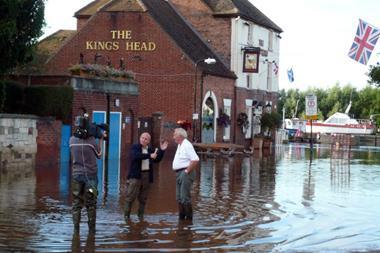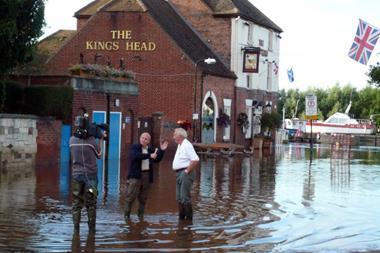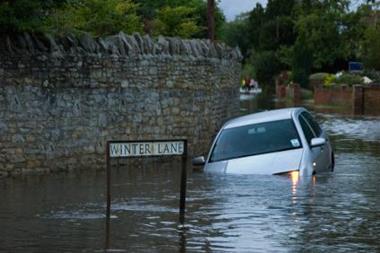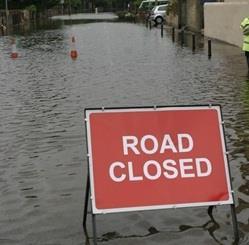With the government reducing spending on flood defences, and public sector cuts taking hold, the future of insuring flood-risk areas is looking troublesome. Our panel of industry experts debated the issues
New government flood risk management plans will create uncertainty over funding, insurance experts have warned.
Speaking at the recent Insurance Times Ordnance Survey roundtable at the Dome Room, London, ABI policy adviser Matthew Cullen said proposals for a new model to fund flood defences would present difficulties for insurers. Under the plans, which have just been consulted on, the government will only invest in flood schemes if they receive match funding from other sources.
“We’re seeing a shift away from it being a single investment pot that we can easily quantify and easily understand. It’s going to be a much more fluid, localised system of flood defence expenditure, where nobody really knows what’s going to be invested,” Cullen said. “It will be difficult for us to understand how much money will be invested, and where and when, in the long-term.”
Against the tide
The government plans to spend £540m a year on flooding defences in England over the next four years – 8% less per year than under the previous government.
AXA’s home insurance manager Douglas Barnett said efforts would also be hit by the public sector cuts. “There will be a massive loss of investment through local authorities,” he said, adding that the new funding mechanism failed to fully address the growing problem of surface water flooding – an over-flowing of water onto land that is normally dry.
“It’s also important to remember that most of the money committed is to do with river and coastal flooding prevention – not surface water. If you go back to 2007, most losses related to surface water. The government has only woken up to that recently, as have most insurers,” Barnett said.
Cullen also raised concerns about the ‘second generation’ national surface water maps being prepared by the government. He said: “It turns out that, in some areas, they’re not as good as the older maps.”
Jardine Lloyd Thompson partner for European real estate Bill Gloyn said the Environment Agency’s data on surface water was 10 to 15 years behind that of river and coastal flooding, and voiced concerns that the government would be reluctant to accept data from the insurance sector on surface water.
“Unfortunately it appears that their funding, which was supposed to be accelerated to understand that better, has now been cut back, so the Environment Agency is not going to be able to understand this any better.”
Hosted by comedian and actor Tom Allen, 34 Gold, 23 Silver and 22 Bronze awards were handed out across an amazing 34 categories recognising brilliance and innovation right across the breadth of UK general insurance.














































No comments yet